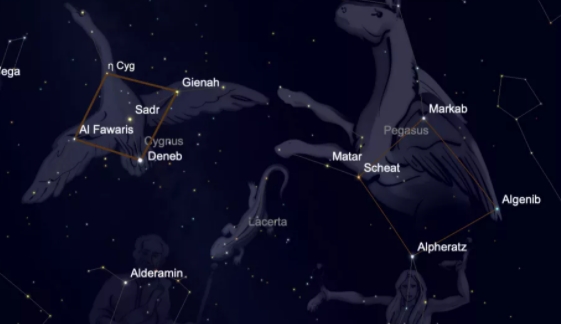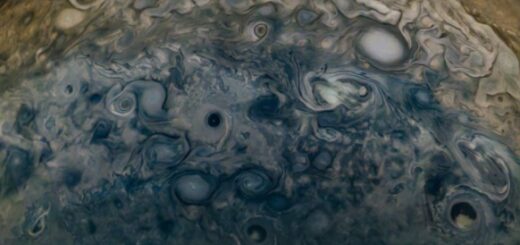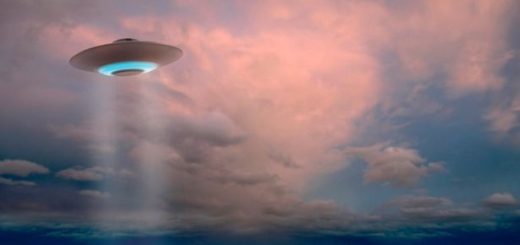Spot two ‘baseball diamonds’ in the night sky

Once upon a time, more than half a century ago, two major league baseball stadiums were situated less than a mile from each other in New York City. One was located on Coogans Bluff, a promontory near the western shore of the Harlem River in the Washington Heights section of Upper Manhattan. Known as the Polo Grounds, it was home to the New York Giants and later, the fledgling New York Mets. The other was in the South Bronx; Yankee Stadium. Neither ballpark exists today, although immediately adjacent to the “old” Yankee Stadium, a new Yankee Stadium rose up in 2009. But for 40 years, beginning in 1923, the Polo Grounds and the original Yankee Stadium were in close proximity to each, separated only by borough boundaries and a body of water.
Both ballparks were also unusual in their respective shapes. This was especially true with the Polo Grounds, which was nicknamed “The Bathtub” with very short dimensions (less than 280 feet, or 85 meters) down the left and right field lines, while dead center field was 483 feet (147 m) away!
I think about this a lot at this time of year around World Series time, because we have something very similar like this in our current early autumn evening sky: two baseball diamonds, one — like the Polo Grounds — with overly large and unusual dimensions. We know who designed one of these stellar baseball fields, while the other has an unknown lineage.
“Yankee Stadium”
The star pattern that reminds me of Yankee Stadium can be found this week well up in the western sky a couple of hours after sunset. Astronomer Henry Neely (1879-1963), who worked at New York’s Hayden Planetarium and who was known as the “Dean of New York Stargazers,” invented this pattern and outlined it in his 1946 book “A Primer for Star Gazers” (Harper & Brothers), a bit dated but still excellent guide to the constellations, copies of which can still be found online.
Study the stars of the constellation Cygnus, the swan then check our map to find Neely’s baseball game.
The batter (the bright star Deneb) is facing the pitcher (Sadr) and has hit a fly to center field. Albireo is running in to get it and second baseman Phi is also out after it. Shortstop Eta has run over to cover second for Phi. Perhaps Deneb is a left-handed power hitter, since left fielder Vega plays normal depth, but Altair is quite deep out in right-center. Meanwhile Epsilon (aka Gienah) is at first base, while Delta (Al Fawaris) patrols the “hot corner” at third.
Of course, if you ever point either of these celestial ball fields to members of your family or friends, you might want to substitute the star names for the names of the players on your own favorite baseball team. You can even embellish the concept of this star pattern by doing a little play-by-play.
As an example, when describing the baseball game to his planetarium audiences, Neely would sometimes point to a close pair of stars near to Deneb (Omicron and 32 Cygni) commenting: “Well, it looks like there’s some controversy brewing … I see the manager having an argument with the home plate umpire.”
And while you’re exploring this ballpark, look off just to the left and you’ll find another baseball stadium, though rather large and somewhat oddly shaped.
“The Polo Grounds”
night sky fall 2020 baseball diamonds
The sky chart on the left shows the stars in the “Polo Grounds” in the Great Square of Pegasus, while the chart on the left shows “Yankee Stadium” in the constellation of Cygnus, the swan. (Image credit: SkySafari app)
I have no clue who first decided to designate this region of the sky as a baseball field, but the Great Square of Pegasus, a well-known landmark of the autumn sky, has always been referenced as a baseball diamond by planetarium lecturers over these many years (even though the “diamond” itself is in rather banged-up condition). It was for this reason that I chose to associate this star pattern with the old Polo Grounds.
This week at around 8 p.m. local time, the Square is nearly overhead and toward the south.
The star Scheat, in the upper right corner of the Square, would mark home plate. The star Alpheratz, in the upper left corner of the Square, marks first base (Alpheratz, in fact, actually belongs to the constellation of Andromeda, the princess). Algenib, in the lower left corner of the Square is second base, while Markab in the lower right corner is third base.
If your skies are reasonably dark, you’ll be able to see two fourth-magnitude stars, Tau and Upsilon Pegasi — both inside of the Square, and roughly one-third the distance from Scheat to Algenib. Perhaps we might imagine this stellar pair as the pitcher having a conference with his catcher just out in front of the mound. Meanwhile, waiting behind home plate is the umpire, marked by the star Eta Pegasi. Finally, another pair of stars — Lambda and Mu Pegasi — can be found just off of the third base line. Perhaps we could imagine that here is the batter getting some instructions from the third base coach.
Or maybe it’s yet another argument between the manager and the umpire.
A covid connection
Neely would always finish his baseball discussion by sweeping his electric pointer around the star-studded planetarium sky with a flourish and, with tongue firmly planted in cheek, noting, “It must be an important game being played tonight … why, just look at all the people who showed up!”
But sadly, for most cities and nearby suburbs, light pollution has squelched a view of all but the brightest stars, in a way, mirroring in our celestial ballparks by what we saw in this dysfunctional year of 2020, when, thanks to the COVID-19 pandemic, the baseball stadiums were occupied not by people, but by cut-outs of people sitting in the stands. And the stadiums themselves were mostly empty.



 Creators of mankind
Creators of mankind Description of “Tall white aliens”
Description of “Tall white aliens” Where they came from?
Where they came from? About hostile civilizations
About hostile civilizations The war for the Earth
The war for the Earth “Tall white aliens” about eternal life
“Tall white aliens” about eternal life Video: “Nordic aliens”
Video: “Nordic aliens” Aliens
Aliens Alien encounters
Alien encounters The aliens base
The aliens base UFO
UFO Technology UFO
Technology UFO Underground civilization
Underground civilization Ancient alien artifacts
Ancient alien artifacts Military and UFO
Military and UFO Mysteries and hypotheses
Mysteries and hypotheses Scientific facts
Scientific facts


















